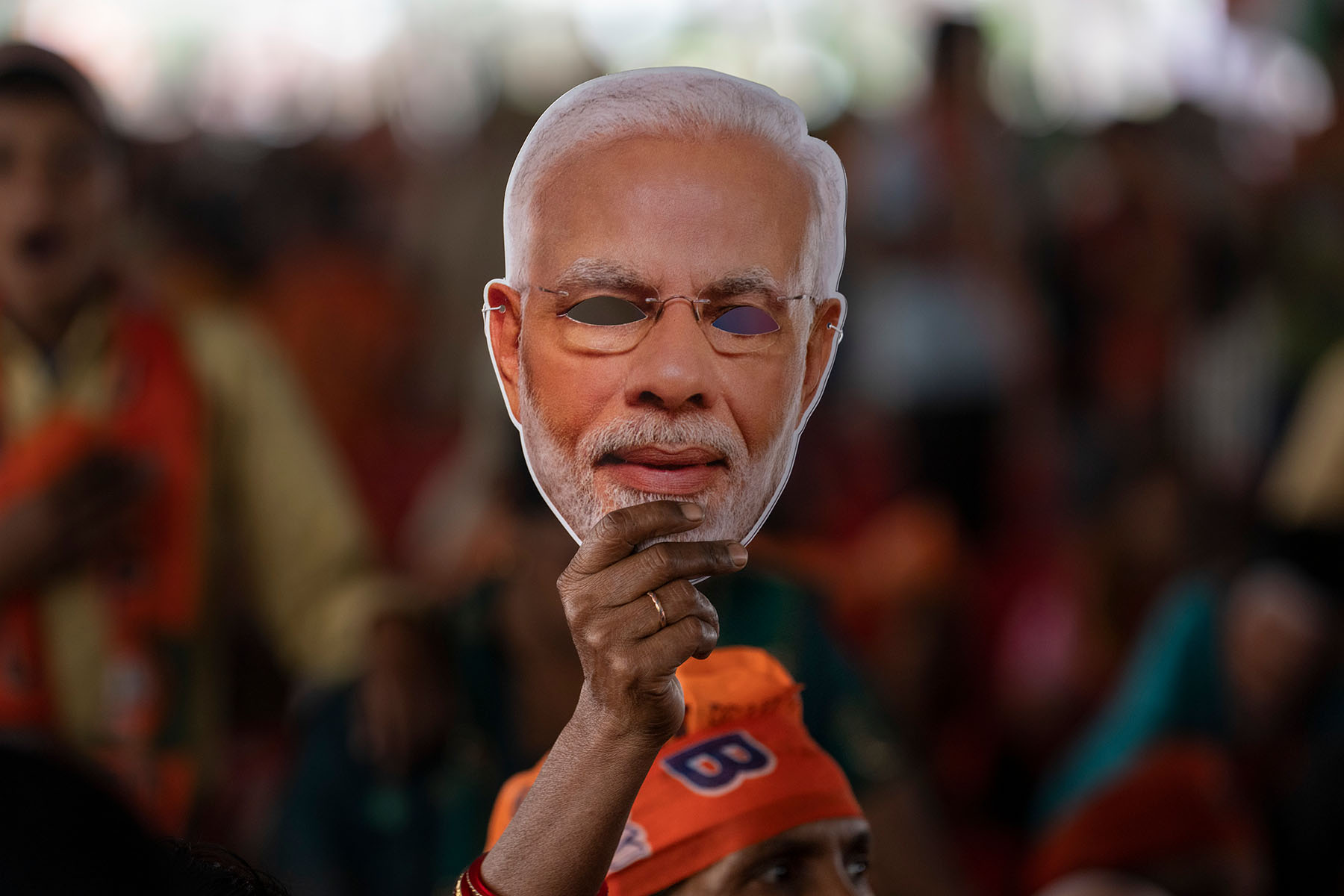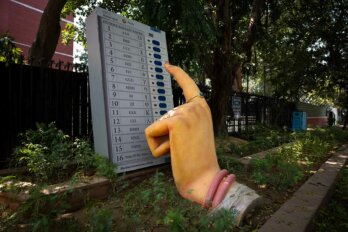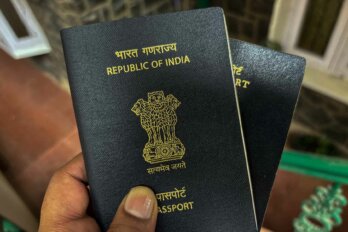“India is indeed the mother of democracy,” Prime Minister Narendra Modi declared in March 2023 at the Summit for Democracy. It was an event hosted by the US State Department to bring together the world’s democratic powers for a “democratic renewal,” combat authoritarian trends, and safeguard, among other things, human rights. India was being positioned by its leader as not only the world’s largest democracy but also its oldest. “The idea of elected leaders was a common feature in ancient India,” Modi said at the summit, “long before the rest of the world. In our ancient epic, Mahabharata, the first duty of citizens is described as choosing their own leader.”
But there are at least two versions of the events unfolding in the world’s largest democracy. One is promoted; the other is suppressed.
The first version is the one that most people talk about, celebrated by Indians in WhatsApp messages that go viral across the world and by many Western politicians, bankers, and journalists. It is the story of Modi and India under his regime. He was the son of a man who served passersby sweet milky tea from his railway cart—or a chaiwallah. But, by his own proclamations, it is the strength of Indian democracy that enabled him to rise from serving tea to serving as the head of government for more than twenty years—first as chief minister of Gujarat state and then as Indian premier.
When the US welcomed Modi in 2019, it was the largest ever gathering for a foreign political leader in the country. The Texan sky was bright and sunny as people inched their way into the NRG Stadium, home of the Houston Texans football team, for the “Howdy Modi” event. Modi took the stage, hand in hand with then US president Donald Trump. The two men stood tall above the 72,000 people who had gathered. Modi admired the crowd not just for the arithmetic but said it also marked both a new history and a new chemistry. He spoke about how India now challenged those who believed nothing can change, how the country aimed high and achieved higher. It now had 99 percent rural sanitation, 95 percent cooking gas connections, low inflation and high growth rates like never before, and a data revolution with the cheapest data in the world—the new oil, the new gold. And he talked about India’s unity in diversity. He said, “So if you ask me, ‘Howdy, Modi?’ My answer is: Everything is well in India.”
It was a show he had performed four years before. An even larger audience of 90,000 people had packed into London’s Wembley Stadium on a cold winter’s night. The UK government had laid out the red carpet for the Indian prime minister that November of 2015. The Red Arrows soared in the sky over the House of Commons with their iconic flypast. Lunch with the queen at Buckingham Palace, a night in the foothills of the Chilterns at Chequers, the sixteenth-century country manor house of the UK prime minister, and an invitation to address the parliament. But at Wembley, it was a welcome of a different order.
A private party was launched by an Olympic-style ceremony and a themed song in “Hinglish”—a fusion of Hindi and English. There were dazzling cultural performances before the stadium exploded in a spectacular firework display. The roar of the crowd was overwhelming as Modi—whose landslide-victory-winning election slogan the year before had been “achhe din aane wale hain,” or good days are to come—said he would make India into an economic superpower. He played to the warmth of the crowd, with British prime minister David Cameron by his side. An Eton- and Oxford-educated man, Cameron found himself to be the decoration at the chaiwallah’s show. “A stranger in his own country,” Cameron apparently later confessed.
But there is another version to Modi’s triumph. That side was represented by a small group of protesters outside Wembley Stadium that winter of 2015 who chanted, “Modi go home!” and “David Cameron, shame, shame!” They reminded Londoners that for a decade until 2012, Modi had been barred from Britain. More than 1,000 Muslims had died, while he was chief minister, in pogroms that had taken place in Gujarat in 2002. Modi was accused of presiding over the violence, at the very least of doing nothing to stop it, and the protesters highlighted this gory chapter in Gujarati history. They also put a spotlight on the rising human rights abuses across India and the increasing restrictions on free speech since Narendra Modi became prime minister—which had just led more than forty writers to return the awards given to them by the Sahitya Akademi, the country’s most prestigious literary institution. Salman Rushdie, supporting the writers who handed back their awards, said, “What has crept into Indian life now is a degree of thuggish violence which is new. And it seems to be given permission by the silence of official bodies.”
In Texas, too, protesters gathered for a “rally for freedom” and drove tractor-trailer trucks across Houston to the Howdy Modi event. They complained about the increasing discrimination faced by Muslims, Sikhs, Christians, and marginalized tribal and caste groups in Modi’s India. The month before, in August 2019, just nine weeks after he was re-elected prime minister in yet another landslide victory, Modi had stripped Jammu and Kashmir, India’s only Muslim-majority state, of the partial autonomy it had for over seven decades. He had removed the state’s constitution, turning it into two centrally administered union territories.
Ahead of Modi’s announcement of the changes he was imposing on Kashmir, tens of thousands of security troops were sent to what was already one of the most militarized zones in the world. A total communications blackout cut access to news from Kashmir. In the longest internet shutdown in any democracy, internet services were suspended for six months and high-speed mobile internet blocked for one and a half years. Meanwhile, within Kashmir, a curfew was declared, 4,000 people were detained, and 200 political leaders, including three former chief ministers, were placed under house arrest. Protesters were fired at by the security forces with metal pellets that, since 2016, had already fully or partially blinded 1,100 Kashmiris.
Back in India, shortly after Modi’s return from Texas, hundreds of thousands of peaceful protesters took to the streets in cities across the country, from Delhi in the north to Bengaluru in the south and Kolkata in the east to Mumbai in the west. They held placards against a newly planned National Register of Citizens, saying it was targeted to deprive Muslims of Indian citizenship, and they marched in solidarity against a Citizenship Amendment Act passed in December 2019 in both houses of parliament. The protesters said that, under the guise of giving a pathway to citizenship to undocumented residents who had fled religious persecution, Muslims were being excluded. Non-Muslim immigrants from the neighbouring Muslim-majority countries of Afghanistan, Bangladesh, and Pakistan who did not have valid passports, travel documents, or permits to stay, and who had arrived in India before the end of 2014, would be given sanctuary—but not Muslim migrants with the same background.
The protesters said that passing a law that made faith a condition of citizenship was in contravention of the Constitution. The NRC was to begin the process of tackling illegal immigration: recording every single person residing in the country with the aim of separating those whom the state considered citizens from those that India’s home minister described as “intruders” and “termites.”
Prison-like detention centres with high boundary walls and watchtowers were planned for those expelled. In the northeastern state of Assam, India’s largest detention centre, officially known as the Matia transit camp, was built with the capacity to house 3,000 people. At least eleven other detention centres were planned, from Punjab in the north to Karnataka in the south. Hundreds of thousands of Muslims, many of whom had been born in the country and had nowhere else to go, were expected to be impacted, while the CAA would rescue many of the non-Muslims from detention. The noted writer Arundhati Roy put it astutely: “This is not a country trying to manage a refugee problem; this is a country that is manufacturing refugees out of its own population.”
Many fear that Indian democracy is now facing the greatest challenge since the end of British colonial rule in 1947. India was founded with democratic ideals, a place where no single culture, language, or religion was central to its identity or unity. A place where every citizen—regardless of caste, gender, religion, literacy, or wealth—could vote, but also a place where democracy was always recognized to mean much more than elections in the daily fight for social justice, equality, protection against discrimination, and freedom from domination and oppression.
The preamble to India’s Constitution promised liberty of thought, expression, belief, faith, and worship and equality of status and opportunity. “Secular” and “socialist” were added afterward, and India was imagined as a “sovereign socialist secular democratic republic.” These were ambitious goals for a deeply hierarchical, unequal, and religiously endorsed caste-based society, but a whole range of institutions were put in place to nurture and protect these democratic values: a welfare state, an education system, legal structures, the media.
There were, of course, times when these values were entirely undermined, the quintessential example being the period between 1975 and 1977 known as the Emergency, declared by then prime minister Indira Gandhi, when constitutional rights were suspended across the nation. The Emergency was a time when people lived in fear of the midnight knock that could wrench one away from loved ones and cast a grim shadow across the democratic history of India. Yet, if anything, it also seemed to strengthen the resolve of many Indians to protect and spread the democratic values that were the spirit of India’s Constitution.
By November 2020, however, The Economist said that India may be “sleepwalking into authoritarianism.” As the country travelled a road paved by Hungary, Turkey, and Brazil, international criticism of India spread, from Le Monde and the Guardian to Foreign Affairs and Time magazine. “The world’s largest democracy has turned into an electoral autocracy,” declared the 2021 annual report of the Swedish V-Dem Institute, one of the world’s most widely read reports charting democracy globally, in a special section devoted to India, “Democracy Broken Down.”
When India’s independence turned seventy-five, in August 2022, PEN International and PEN America, alongside 102 writers, came together in an open letter stating their alarm over “the deterioration of free expression” in the country and called for “the release of imprisoned writers and dissident and critical voices.” They pointed out that “in PEN America’s most recent ‘Freedom to Write Index,’ India is the only nominally democratic country included in the count of the top ten jailers of writers and public intellectuals worldwide.”
Meanwhile, others highlighted the rising inequalities in India. The country slipped rapidly toward the bottom of the Global Hunger Index and ranked 107 out of 121 countries in 2022, worse than neighbouring Pakistan, Bangladesh, Nepal, and Sri Lanka. The 2018 Global Slavery Index estimated 8 million Indians to be living in modern slavery. Meanwhile, Oxfam, in 2021, reported that India’s richest 1 percent owned more than 40.5 percent of its total wealth. Much of this was down to crony capitalism—favours doled out by the government to select businessmen. The share of billionaire wealth that derived from cronyism rose from 29 percent to 43 percent between 2016 and 2021, said The Economist. The Modi regime had grown oligarchs.
In 2023, India took over presidency of the G20, an intergovernmental forum of nineteen countries and the EU bloc seeking to address major issues of the global economy. As heads of state were to be welcomed to the country in February 2023, a group of Indian peoples’ movements, trade unions, and civil society organizations came out with a public statement criticizing the G20 for “its absolute silence” on how the Modi government was “consistently using all national institutions at its disposal to silence the dissenting voices of human rights defenders, repeatedly attacking minority communities with impunity, and systematically destroying institutions and progressive civil society spaces.”
At the heart of both stories—that of the glory of “the mother of democracy” or that of the rise of authoritarianism in India—is the takeover of the country by a multi-armed octopus. The head of the octopus, the RSS—the Rashtriya Swayamsevak Sangh—to which Modi belongs, has for nearly a century campaigned to transform India into an ethno-religious nation known as the Hindu Rashtra, or a Hindu nation. Undermining the secular values of India’s Constitution, it has advocated for Hindutva, an ideology that promotes Hindu supremacy to transform and define Indian culture and the nation state in terms of Hindu values.
Crucially, what the octopus has also developed, especially in the past two decades, is a very close relationship with major Indian capitalists. The relationship between Modi’s party, the Bharatiya Janata Party, and some of India’s big industrial families has grown to be reciprocal in a form of institutionalized crony capitalism. Alongside Modi’s popularity has grown the wealth of one of India’s biggest industrialists, Gautam Adani, who, until recently, was the second richest man in the world.
Adani was once just a small-time diamond merchant, but he built an industrial empire in Gujarat that allowed Modi to sell his Gujarat “development model,” and as a result, his business group acquired assets all over the country and also abroad. Major shipping ports that control freight across the Indian coastline, seven private airports, and warehouses of grain across the country are controlled by the Adani Group. It became both India’s leading coal power producer as well as its main champion of renewable energy. The Adani Group was promised further land for cement plants, power plants, and coal mining in some of the most ancient biodiverse forests in the country. It also owns apple farms, generates electricity, and controls television news channels. Adani was not the only one. There were others, like the Ambanis, Tatas, and Birlas, who benefited from the Modi regime. But it was Adani’s private jet that Modi flew for a victory tour as prime minister, and Adani who accompanied Modi on international trips to at least six different states, both officially, as part of his business entourage, and unofficially, undoubtedly securing numerous business deals. Adani’s wealth rose by 1,600 percent between 2014, when Modi was first elected prime minister, and 2022, from $8 billion (US) to $137 billion.
In 2017, the BJP introduced electoral bonds, which enabled corporations to fund political parties without their identities being revealed, enabling those who had benefited under the BJP’s rule to reciprocate the generosity. Between 2019 and 2020, the BJP was said to have cornered three-quarters of the bonds, compared with just 9 percent going to the main opposition, the Congress party. The BJP grew to become India’s richest political party, perhaps the richest political party in the world.
The crisis of Indian democracy is often simplified to be a symptom of rampant Hindu nationalism or linked to the personality, strength, and power of the prime minister. Although these are certainly important aspects of the threat to Indian democracy, there are much wider and deeper phenomena that go beyond the actions of one man. The rise of authoritarianism in India has relied on the slow, patient, and organized takeover of vast areas of culture, society, and institutions and a pact with capital through electoral democracy itself.
Adapted and excerpted from The Incarcerations: BK-16 and the Search for Democracy in India by Alpa Shah. Copyright © 2024 Alpa Shah. Published by HarperCollins in India and the UK and by OR Books in North America. Reproduced by arrangement with OR Books. All rights reserved.






